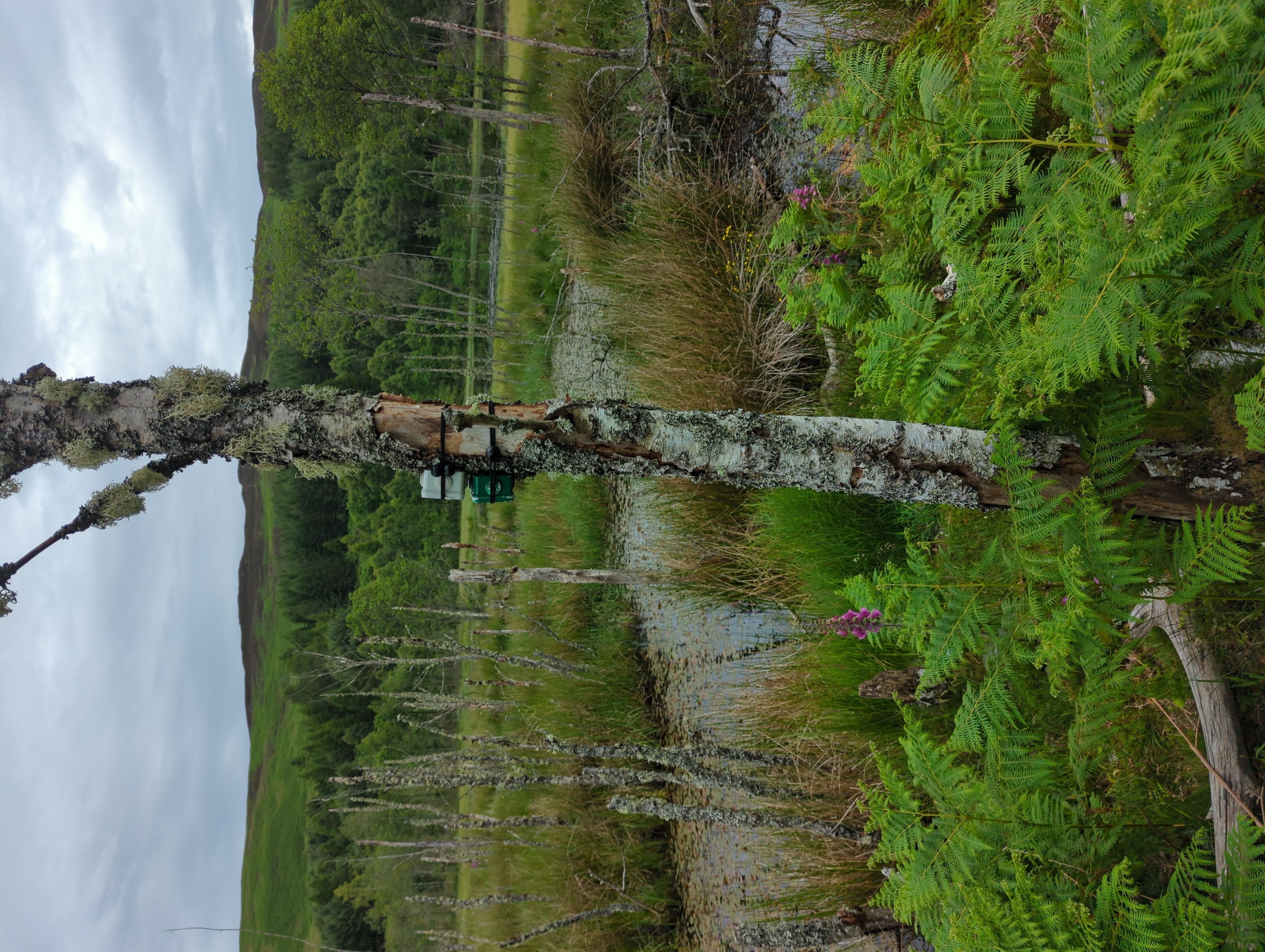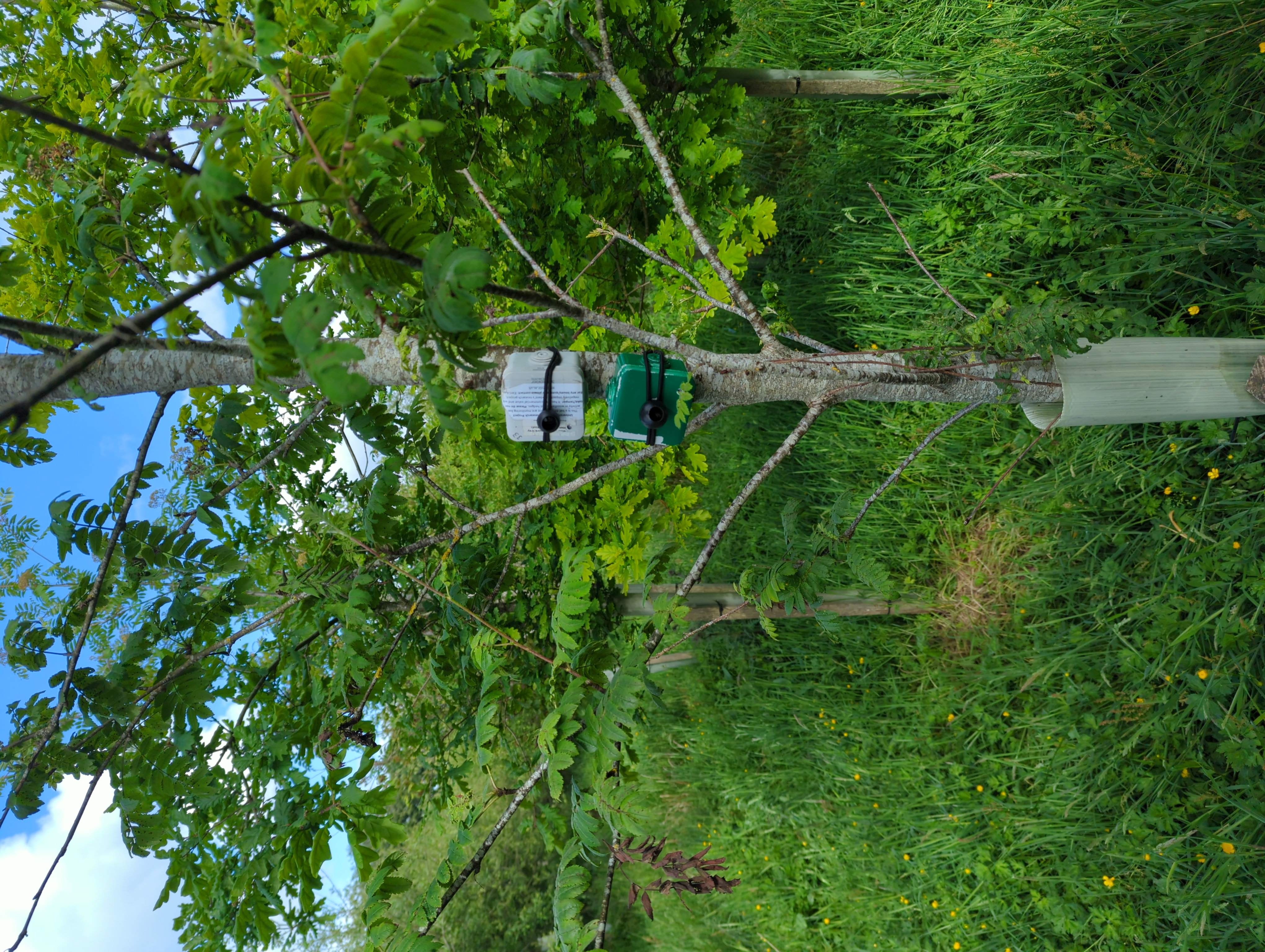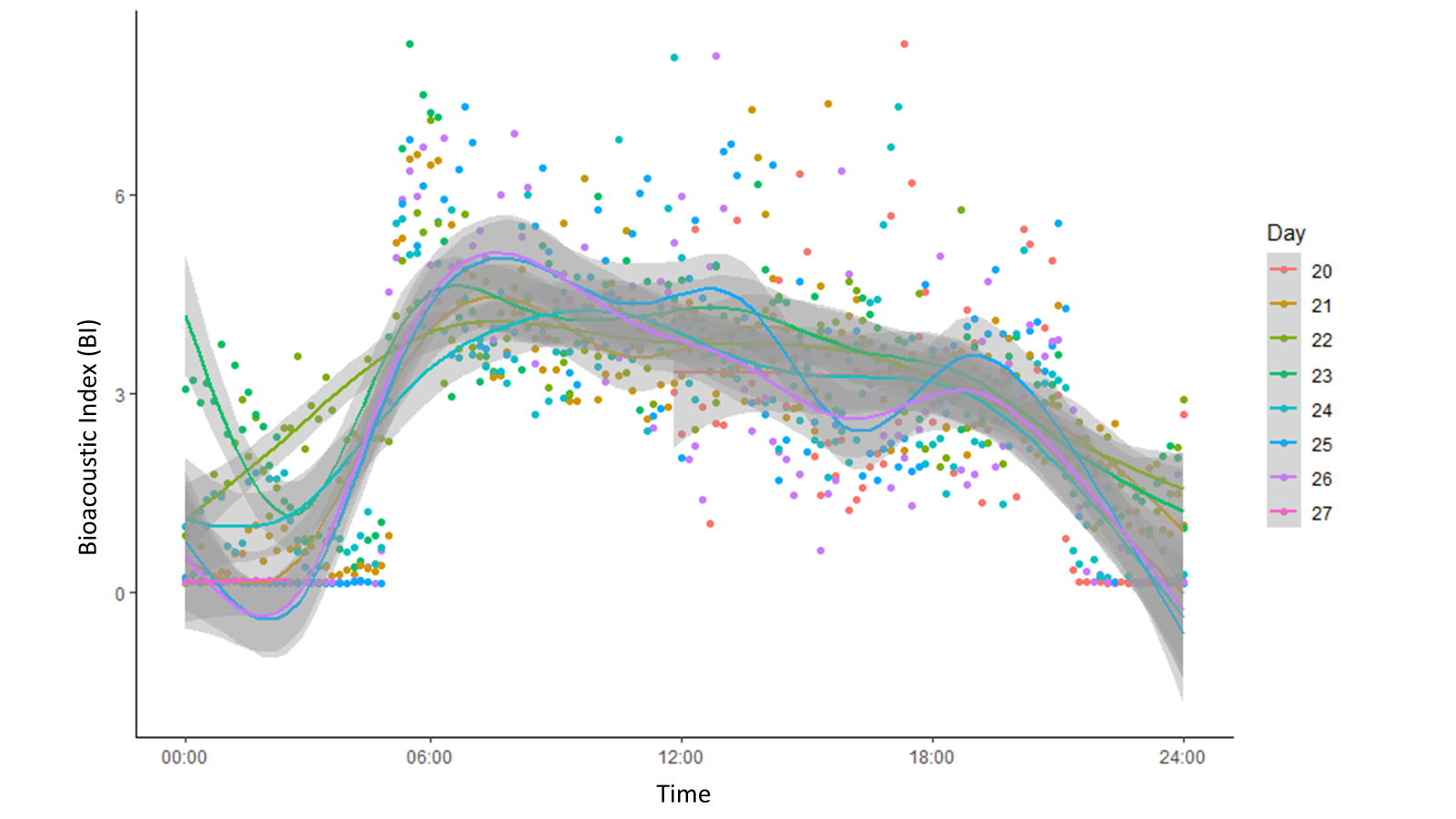Fieldwork for RESTOREID in Scotland

Spring 2024
In spring 2024, the Scottish RESTOREID field team, with staff and students from the Universities of Stirling and Glasgow began fieldwork to deploy rapid biodiversity and pathogen assessments.
As outlined in previous news updates, the overarching aim of RESTOREID is to identify how the biodiversity of both reservoir and pathogens is influenced by restoration actions at both the local and the landscape scale. In Scotland, we are taking advantage of an existing network of woodlands that form part of the WrEN project (www.wren-project.com), established in 2013, which was designed to explore biodiversity responses to woodland creation. From the 100+ woodlands encompassing the WrEN network, we selected just over 30 woodlands which varied in how long ago restoration began (ranging in planting age from 10-170 years old, and the degree of structural complexity, which previous studies have demonstrated is a key driver of biological diversity. We also surveyed biodiversity at 8 wetland sites where beavers had been reintroduced between 1 and 20 years ago.
The Stirling team focused largely on characterising the soundscapes of our restored woodlands and wetlands. This is one of the methods being used that circumvents the need for taxonomic identification.
The fieldwork for soundscape ecology is remarkably easy – just program a couple of AudioMoth recording devices, switch them on, and tie them to a tree!

Audiomoth deployed at a woodland site
Our first AudioMoth was programmed to record at human-audible range, which recorded 24 hours a day, for seven days. Altogether, this gives us over 320,000 minutes of audio - and that’s just the stuff we can hear! A second device, programmed to record overnight at ultrasonic frequencies, was used to pick up bat activity data at each site.
The audio data collected from these acoustic devices can be analysed in a number of different ways, with technological advances constantly adding new options to the soundscape ecologists’ toolbox. For RESTOREID, we’re primarily focused on the use of acoustic indices, mathematical functions that measure where and how the sound energy is distributed within an audio file. There are as many as 80 different indices in the scientific literature, so narrowing down exactly which ones to focus on is a huge task in itself! Some can inform us about the amount of noise pollution, while others are built to give us data on the amount of birdsong. These indices, when carefully applied and analysed, will allow us to make inferences about biodiversity, human land-use, and even habitat structure.

The above figure shows the Bioacoustic Index values for over a 24-hour cycle. Each day of the week is represented by a different colour. The Bioacoustic Index gives a score relating to the amount of noise between 2 and 10 kHz – the frequency at which most animals, but particularly birds, vocalise. In this data from a single site, we can see a clear peak at dawn, likely a result of the dawn chorus.
At our woodland sites, we also took the opportunity to re-survey our structural measurements which will enable us to quantify the changes that have taken place over the past 11 years since they were last surveyed – we measured the size of trees (called diameter at breast height), tree densities, understorey, the amount of deadwood and canopy cover. Analysis is still underway for these data.
In June, the Glasgow team will be reporting on their sampling campaign employing metabarcoding based on environmental DNA (eDNA) collected from carrion flies and leaves to survey vertebrate diversity, and the use of molecular tools, such as PCR and metagenomics, to survey pathogens sampled from woodland rodents. These data will be integrated with those from the other countries involved in RESTOREID, enabling us to examine the relationship between socio-economic factors, ecological drivers, and disease emergence dynamics specifically within restoring landscapes across a spatial and temporal continuum and within a range of different landscape contexts.

Audiomoth deployed at a wetland site
